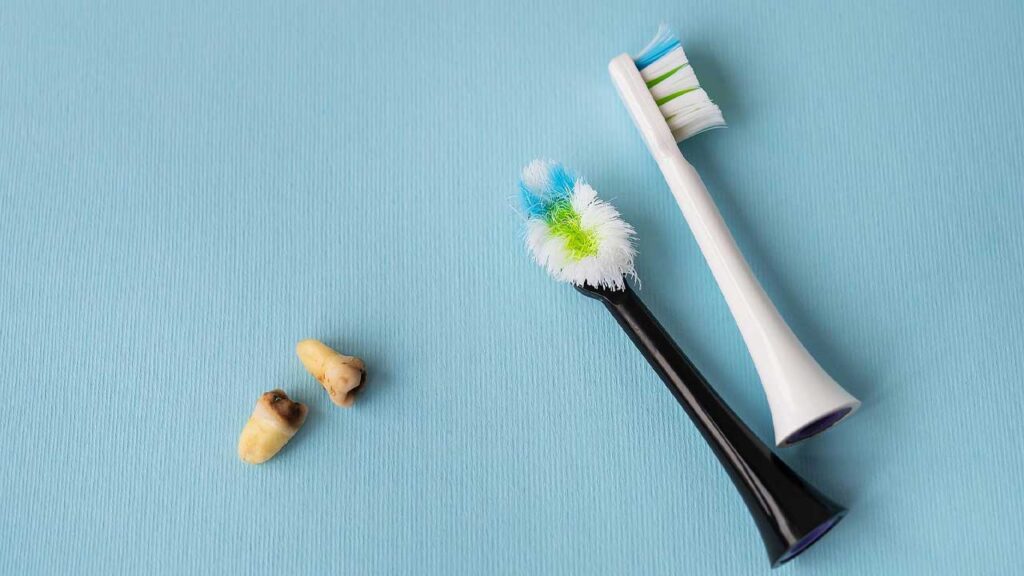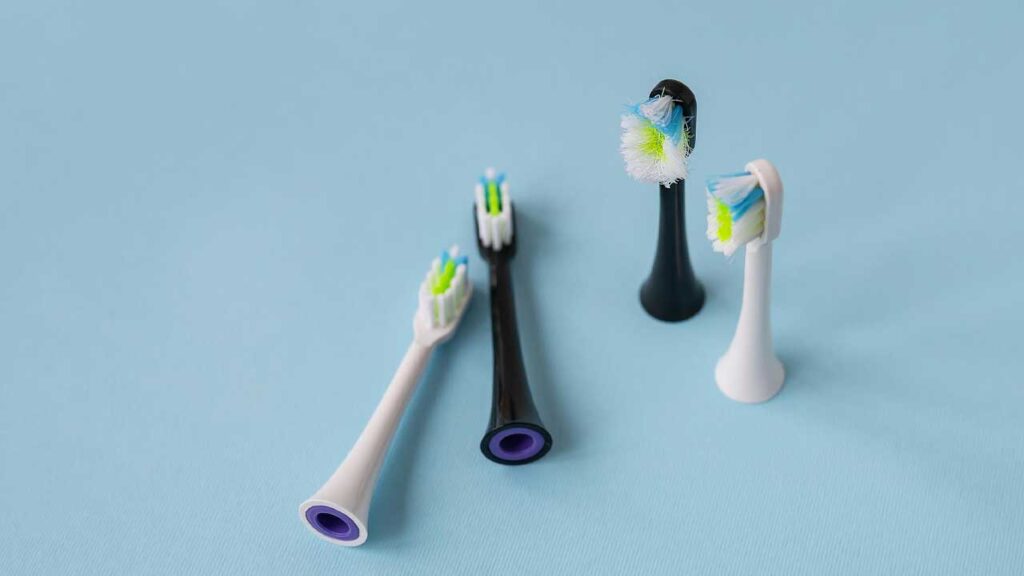Toothbrushes are essential for maintaining good oral hygiene and preventing dental diseases. However, they also have a significant environmental impact, especially when it comes to their disposal. According to a study by the University of Manchester, around 3.6 billion toothbrushes are used and thrown away every year worldwide, and most of them end up in landfills or oceans.
One way to reduce the environmental impact of toothbrushes is to use toothbrush head replacements, which are detachable heads that can be attached to a reusable handle. This way, you only need to replace the head when it wears out, instead of throwing away the whole toothbrush.

But how effective are toothbrush head replacements in reducing the environmental impact of toothbrushes? And what are the benefits and drawbacks of using them? In this article, we will explore these questions and provide some tips on how to choose and use toothbrush head replacements in a sustainable way.
How Toothbrush Head Replacements Reduce Environmental Impact
Toothbrush head replacements can reduce the environmental impact of toothbrushes in several ways:
They reduce plastic waste.
Toothbrush head replacements use less plastic than regular toothbrushes, as they only consist of the bristles and a small part of the handle. This means that they generate less plastic waste when they are discarded. According to a study by Trinity College Dublin and University College London, a plastic manual toothbrush with a replaceable head has a lower carbon footprint and human health impact than a traditional plastic manual or electric toothbrush.
They reduce transportation emissions.
Toothbrush head replacements are lighter and smaller than regular toothbrushes, which means that they require less fuel and space to transport. This reduces the greenhouse gas emissions and air pollution associated with transportation. According to the same study, a plastic manual toothbrush with a replaceable head has lower emissions of particulate matter, nitrogen oxides, and sulfur dioxide than a traditional plastic manual or electric toothbrush.
They extend the lifespan of the handle.
Toothbrush head replacements allow you to reuse the handle of your toothbrush for a longer time, instead of replacing it every few months. This extends the lifespan of the handle and reduces the need for new materials and resources to produce it. According to another study by Trinity College Dublin, reusing the handle of your toothbrush can save up to 90% of the material and energy required to make a new one.
Benefits and Drawbacks of Toothbrush Head Replacements
Toothbrush head replacements have some benefits and drawbacks that you should consider before using them:
Benefits
They save money.
Toothbrush head replacements are cheaper than regular toothbrushes, as you only need to buy the head and not the whole toothbrush. This can save you money in the long run, especially if you use an electric toothbrush, which has more expensive heads than manual ones.
They offer variety.
Toothbrush head replacements come in different shapes, sizes, and types, such as soft, medium, hard, or charcoal-infused bristles. This gives you more options to choose from according to your preferences and needs. You can also switch between different heads depending on the occasion, such as using a whitening head for special events or a sensitive head for gum problems.
They are easy to use.
Toothbrush head replacements are easy to use, as they usually have a simple snap-on or twist-off mechanism that allows you to attach or detach them from the handle. You don’t need any tools or skills to change your toothbrush head, and you can do it in seconds.
Drawbacks
They may not fit your handle.
Toothbrush head replacements are not universal, which means that they may not fit your existing handle. You need to make sure that you buy compatible heads for your handle, otherwise you may end up wasting money or damaging your toothbrush. You can check the compatibility by looking at the brand, model, or shape of your handle and comparing it with the heads available.
They may not be available everywhere.
Toothbrush head replacements are not as widely available as regular toothbrushes, which means that you may have trouble finding them in some places. You may need to order them online or look for specialty stores that sell them. You also need to plan ahead and stock up on them before you run out, otherwise you may have to use an old or worn-out head until you get new ones.
They may still contain plastic.
Toothbrush head replacements may still contain plastic in their bristles or base, which means that they are not completely eco-friendly. Even if they are made of biodegradable materials such as bamboo or cornstarch, they may still have nylon bristles that are not compostable. You need to dispose of them properly and separate the plastic parts from the biodegradable ones, otherwise they may still end up in landfills or oceans.
How to Choose and Use Toothbrush Head Replacements in a Sustainable Way
If you want to use toothbrush head replacements in a sustainable way, here are some tips to follow:
Choose biodegradable or recyclable heads.
If possible, choose toothbrush head replacements that are made of biodegradable or recyclable materials, such as bamboo, wood, or metal. These materials can decompose naturally or be reused for other purposes, reducing their environmental impact. Avoid toothbrush head replacements that are made of plastic or have plastic packaging, as they are not eco-friendly.
Choose the right size and type of head.
Choose toothbrush head replacements that fit your mouth and teeth size, as well as your brushing style and technique. This will ensure that you clean your teeth effectively and comfortably, without wasting any bristles or energy. You can also choose different types of heads depending on your oral health needs, such as whitening, sensitive, or orthodontic heads.
Replace your head regularly.
Replace your toothbrush head every three months or sooner if it shows signs of wear and tear, such as frayed, bent, or discolored bristles. This will ensure that you maintain good oral hygiene and prevent bacterial growth on your toothbrush. You can also mark the date of replacement on your calendar or use an app to remind you when to change your head.
Dispose of your head properly.
Dispose of your toothbrush head properly according to its material and components. If it is made of biodegradable materials, you can compost it in your backyard or in a municipal facility. If it is made of recyclable materials, you can recycle it in a designated bin or drop-off point. If it contains plastic parts, you can separate them from the rest and dispose of them in a general waste bin.
Q: What are the advantages of using toothbrush head replacements over regular toothbrushes?
A: Toothbrush head replacements have several advantages over regular toothbrushes, such as:
- They reduce the environmental impact of toothbrushes by using less plastic, generating less waste, and requiring less transportation.
- They save money by being cheaper than regular toothbrushes and extending the lifespan of the handle.
- They offer variety by having different shapes, sizes, and types of heads to suit different preferences and needs.
Q: How often should I replace my toothbrush head?
A: You should replace your toothbrush head every three months or sooner if it shows signs of wear and tear, such as frayed, bent, or discolored bristles. This will ensure that you maintain good oral hygiene and prevent bacterial growth on your toothbrush.
Q: How can I find compatible toothbrush head replacements for my handle?
A: You can find compatible toothbrush head replacements for your handle by checking the brand, model, or shape of your handle and comparing it with the heads available. You can also look for labels or symbols that indicate compatibility, such as “fits all” or “universal”. You can also contact the manufacturer or seller of your handle or head to ask for compatibility information.
Q: How can I dispose of my toothbrush head properly?
A: You can dispose of your toothbrush head properly according to its material and components. If it is made of biodegradable materials, you can compost it in your backyard or in a municipal facility. If it is made of recyclable materials, you can recycle it in a designated bin or drop-off point. If it contains plastic parts, you can separate them from the rest and dispose of them in a general waste bin.
Q: Are there any alternatives to toothbrush head replacements that are more eco-friendly?
A: Yes, there are some alternatives to toothbrush head replacements that are more eco-friendly, such as:
- Bamboo toothbrushes, which are made of natural and renewable materials that can biodegrade or be composted.
- Miswak sticks, which are natural twigs that have antibacterial and cleansing properties that can clean the teeth without any plastic or chemicals.
- Silicone toothbrushes, which are made of soft and flexible material that can last longer and be recycled.
Toothbrush head replacements are a more sustainable alternative to regular toothbrushes, as they reduce plastic waste, transportation emissions, and material and energy consumption. They also have some benefits for your wallet, your oral health, and your personal preference.
However, toothbrush head replacements also have some drawbacks, such as compatibility issues, availability problems, and plastic content. You need to choose and use them carefully and responsibly to minimize their environmental impact.
By following the tips in this article, you can make an informed decision about using toothbrush head replacements and enjoy their advantages while protecting the planet.
